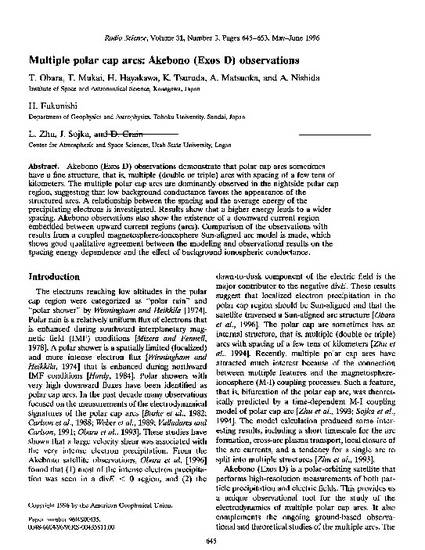
Akebono (Exos D) observations demonstrate that polar cap arcs sometimes have a fine structure, that is, multiple (double or triple) arcs with spacing of a few tens of kilometers. The multiple polar cap arcs are dominantly observed in the nightside polar cap region, suggesting that low background conductance favors the appearance of the structured arcs. A relationship between the spacing and the average energy of the precipitating electrons is investigated. Results show that a higher energy leads to a wider spacing. Akebono observations also show the existence of a downward current region embedded between upward current regions (arcs). Comparison of the observations with results from a coupled magnetosphere-ionosphere Sun-aligned arc model is made, which shows good qualitative agreement between the modeling and observational results on the spacing-energy dependence and the effect of background ionospheric conductance.

Published by the American Geophysical Union in Radio Science.